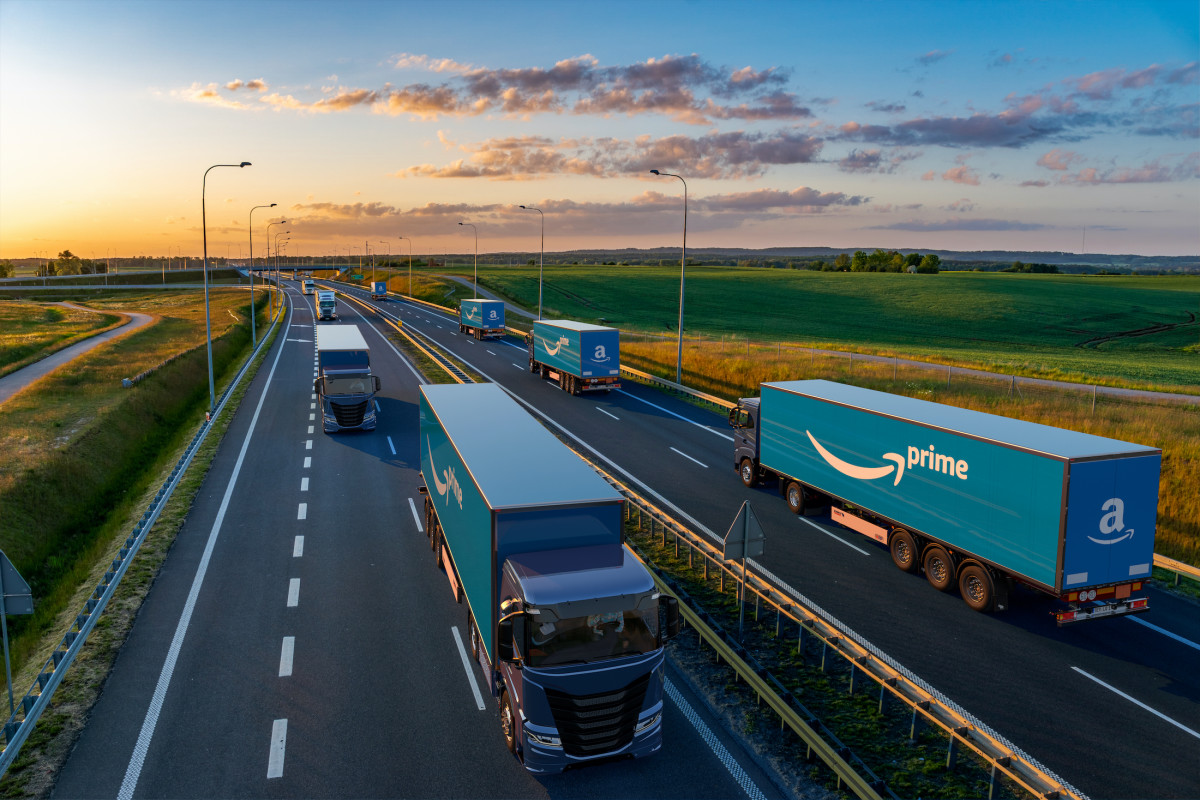Amazon workers popped champagne celebrating successful unionization, but the company's robotics could blunt the worker revolution.
TONY OWUSU
APR 8, 2022 4:02 PM EDT
For decades Amazon's (AMZN) - Get Amazon.com, Inc. Report story has been about growth as the company transformed from a small online bookstore to the global e-commerce behemoth that it is today.
To fuel that growth, the company has invested hundreds of billions of dollars in acquisitions, technology and, perhaps most importantly, warehouses, to deliver goods with unprecedented efficiency.
But the upfront costs Amazon had to pay to become one of the world's most valuable companies could pale in comparison to the ancillary costs the company now faces.
Amazon was so aggressive with its anti-union tactics that the National Labor Relations Board sued Amazon in federal court last month before workers began voting in the union election.
This week the NLRB counsel issued a memo calling for a ban on mandatory anti-union meetings.
The U.S. unemployment rate fell to 3.6% in April. Employers have raised wages in order to entice workers back into the labor market in recent months, leading to a 5.6% increase in wages to $31.73, according to the Bureau for Labor Statistics.
Amazon says it took a $4 billion charge in the fourth quarter driven mainly by labor costs.
"The early wave disruption was handling volume without the capacity to handle it and then quickly playing catch-up," Amazon Chief Financial Officer Brian Olsavsky said during the company's earnings call.
"And as that was starting to improve, labor took a turn in the United States, especially labor availability, and we've really had to scramble to add workers."
That scramble led to the company raising hourly wages and offering improved benefits to draw workers, and while those initiatives helped the company get through the holiday season, it came at a steep cost.
Now, with unionization efforts, those costs could rise.

Amazon Is Losing Unionization Battle
Last week, workers at a warehouse in Staten Island became the first to successfully unionize.
Workers at the warehouse nicknamed JFK8 voted 2,654 to 2,131 in favor of of forming the union, a wide margin of victory for the pro-union side.
The company was trounced despite an anti-unionization campaign that included walls at JFK8 papered with "Vote No" banners, an anti-union website and weekly mandatory meetings.
For years Amazon did everything it could to head off unionization efforts at its fulfillment centers. As part of that, the company paid $4.3 million to anti-union consultants in just 2020 alone, according to documents filed with the Department of at Inflation
Now, the union could potentially challenge Amazon's labor practices, disrupting the breakneck pace of work Amazon sets for warehouse and delivery employees, and set new hourly wage requirements, according to CNBC.
“We’re disappointed with the outcome of the election in Staten Island because we believe having a direct relationship with the company is best for our employees,” an Amazon spokesperson told CNBC.
Amazon undoubtedly now looking for a solution to its labor issues.
Amazon's Long-Term Labor Solution
Investors reward companies for keeping labor costs down.
Any time a public company announces mass layoff, you can bet there will be an accompanying bump in the company's stock price.
The reason is that investors often believe that if a company can maintain production levels while trimming labor costs, gross margins will invariably rise.
Amazon currently employs about 1.1 million people in the United States. That headcount is augmented by the 200,000 robots the company has working, according to Automation World.

In 2012, Amazon acquired robot-coordinated order fulfillment company Kiva Systems for $775 million in cash.
Amazon Australia opened the largest warehouse ever built on the continent. The 200,000 square-meter facility is the size of 24 rugby fields.
But its size isn't the only thing interesting about the facility. It is also the first "robotics fulfillment center" in the southern hemisphere.
Robots will team with 1,500 workers to house and move around 20 million items. For comparison sake, JFK8 is about 80,000 square meters with a human head count above 8,000 workers.
Amazon has specifically built many of its warehouses to accommodate mobile robots, which can autonomously transport entire shelf units around the facility to complete fulfillment and delivery.
Those robots currently work in conjunction with human workers who do the packing and shipping.
The company is set to open a massive robotics facility in Tallahassee, Florida later this year.
Going Beyond Robots
But robotics will only become a larger part of the Amazon ecosystem, and the shipping industry in general.
The Warehouse Robotics Market was valued at $9.88 billion in 2021, according to Mordor Intelligence, but it is expected to jump to $23.09 billion by 2027 with a compound annual growth rate of 15.33%.
According to Bank of America, it is estimated that by 2025, 45% of all manufacturing tasks will be executed by robotic technology.
According to DHL, 80% of warehouses are still manually operated with no supporting automation.
"While significant advances have been accomplished in robotics, the human workforce still holds the upper hand in running a well-organized warehouse," Mordor Intelligence said.
"Forecast of long-term labor shortages across the United States and Europe, as well as sustained pressure on supply chains to deliver orders quicker and more precisely, has caused operations executives to seriously assess that question as they look for answers to staffing challenges."
Workers at JFK8 popped champagne bottles at the news conference announcing the union vote. But their efforts to improve their working situation may eventually lead to Amazon accelerating its own efforts to trim its warehouse headcount in the name of the all mighty bottom-line.
Amazon admits that it needs human workers. It hired more than 400,000 people during the pandemic and still complained of staff shortages in its most recent earnings call.
But as time goes on and the company refines its robotics, those staff shortages could become a relic of a bygone era.
No comments:
Post a Comment